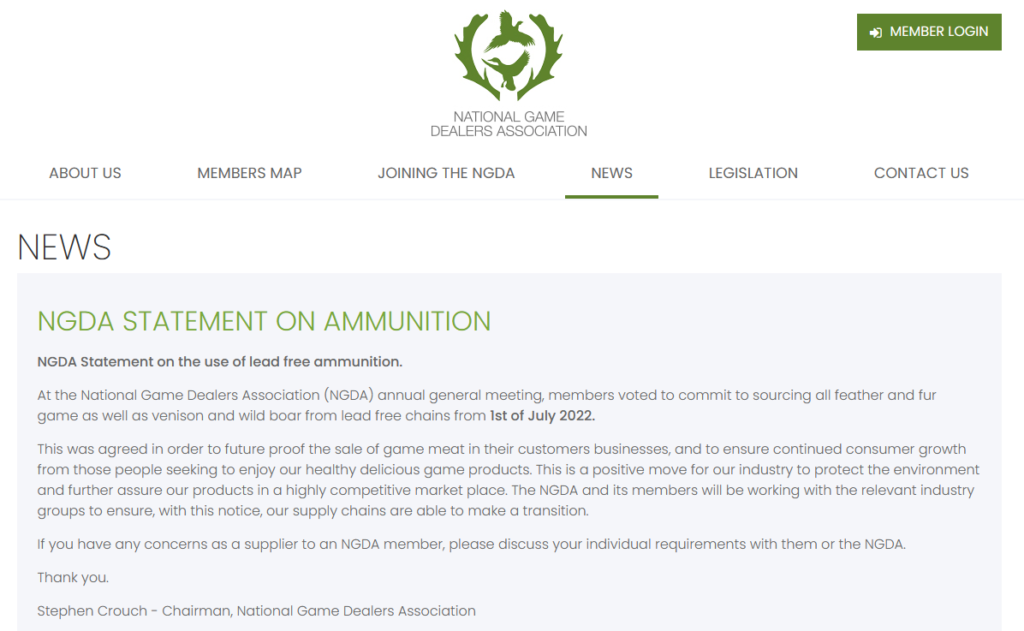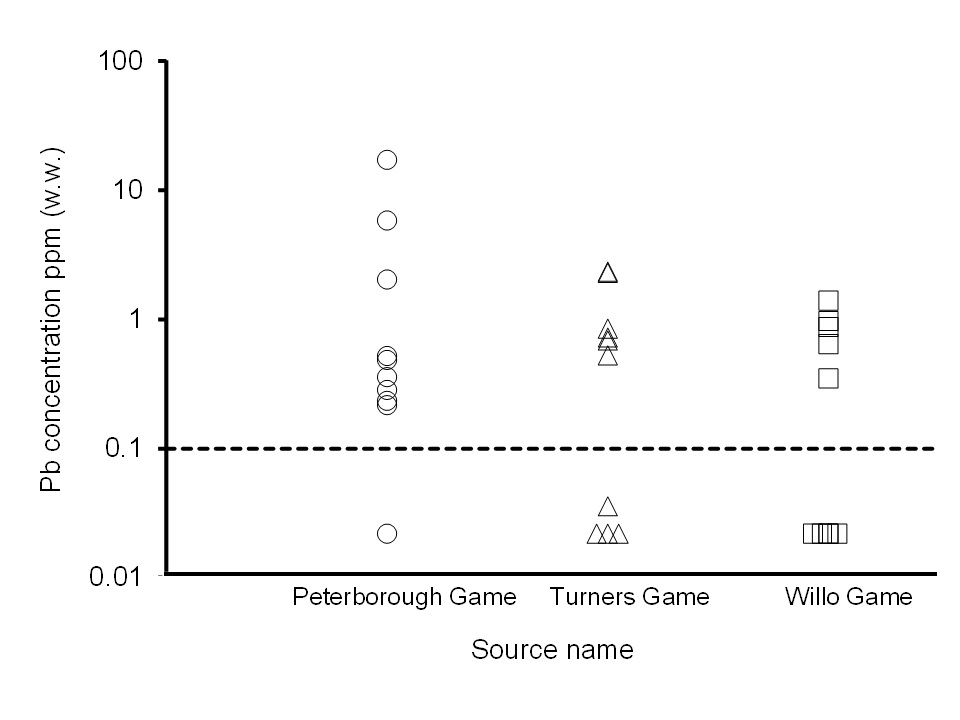NGDA members selling game meat with high lead levels

The National Game Dealers Association claims that its members decided last year not to sell game meat which was shot with lead (toxic) ammunition from July 2022. The wording admits of no ambiguity:
‘At the National Game Dealers Association (NGDA) annual general meeting, members voted to commit to sourcing all feather and fur game as well as venison and wild boar from lead free chains from 1st of July 2022.’.
This is a claim that is easily tested – so we have tested it. And for the three game suppliers for which we have data, the claim is untrue. The levels of lead in the meat are, on average, high. As high, slightly higher in fact, than other samples of game meat which have been tested by Wild Justice and others in the UK in recent years.
We asked the NGDA earlier in the year whether they were sticking to their lead-free promise but received no response (see here). they told us today that they didn’t get our email and they don’t ever look at social media (maybe they should?).
This is what was done (Methods):
In November and December 2022, 10 oven-ready pheasant carcasses were bought from each of three NGDA members (30 carcasses in all). Each carcass was dissected to remove most of the edible meat. The meat was diced and mixed and a sample of 30-50 g taken for analysis, bagged and frozen. Shotgun pellets found during dissection were stored for future analysis to determine their principal metallic element. This analysis has not been done yet. The meat sample from each bird was carefully searched to ensure that it contained no shotgun pellets. The sample was then dried and milled and a subsample analysed to determine the concentration of lead.
This is what was found (Results):
Arithmetic mean concentrations of lead in pheasant meat for the three NGDA suppliers were 2.717, 0.753 and 0.435 ppm (wet weight) for Peterborough Game, Turners Game and Willo Game respectively. The overall arithmetic mean was 1.302 ppm (w.w.). This compares with the EU maximum residue level (MRL) permitted for meat from domesticated animals of 0.1 ppm (w.w.), i.e. the mean lead level across these samples was 13 times higher than would be legal for non-game meat.
The EU maximum residue level (MRL) for lead does not apply, bizarrely, to game meat. However, the Food Standards Agency (click here) and NHS (click here) both warn of the health dangers of lead ingestion, particularly to children so it is educational to look at the proportion of samples that were above and below the EU MRL. Willo Game: 5/10 were below the EU MRL; Turners Game, 4/10 and Peterborough Game only 1/10 was below the EU MRL.

Clearly, buying game meat on the basis of the NGDA claim would be unwise – you’d usually end up eating meat with very high lead levels, albeit legal levels for game meat.
It appears that the words on the NGDA website about lead ammunition were worthless as a guide to what you would be buying.
Discussion:
You can’t tell what the lead content of meat is by looking at it and so you have to trust the supply chain. This supply chain is not working because the umbrella body has made a misleading claim on its website. The claim may not have been intentionally misleading but it was certainly misleading.
This will come as a surprise to many, not least Richard Negus (a shooter who writes for Shooting Times and elsewhere) who was also under the impression that such sources were now lead-free (click here).
Wild Justice phoned all three outlets this morning, at about 1045, and asked two questions, as if we were simply people interested in buying game meat. First – were they NGDA members – all three confirmed they were. Second, was their game meat lead-free – none claimed it was, although one said they could probably source it if really needed. All appeared surprised that the NGDA website said that its members would be selling lead-free game meat from July this year. One agreed that was misleading.
So Wild Justice next phoned the NGDA who said that they had intended to go lead-free but Putin’s war and other things had made that difficult but they still wanted to go lead-free. They also said they had never received an email from Wild Justice asking about this. And that they didn’t look at social media and had not seen our blog on the subject. The NGDA said they would be changing their website and bringing it up to date.
When asked what customers should do if they had bought game meat on the basis that they thought it would be lead-free the NGDA representative didn’t know. Wild Justice suggests that such customers seek a refund.
Wild Justice will contact other NGDA members to ask them their position on lead in game meat. We’ll report our findings.
Government needs to regulate toxic lead out of the game meat food chain. This is simply an example of regulatory failure. Lead ammunition should be banned on environmental and human health grounds. You can’t leave it to an industry to act for the public good if that goes against its own commercial interests. Unfortunately, life rarely works like that.
Acknowledgements: The samples were analysed by Mark Taggart and co-workers in their laboratories at the Environmental Research Institute, University of the Highlands and Islands, Thurso, Scotland.
